This is the second of a 3 part blog post about our visit to Romania in August 2018. The Danube Delta is one of the largest wetlands in the world. Most of it is accessible only by boat. It is a haven for wildlife, particularly waterbirds, and is a destination which should be on every birdwatcher’s ‘must see’ list.
After our visit to the Dobrogea, we spent four days out in the Delta. We sailed from the port of Tulcea, on the Danube, and spent three nights in the village of Crisan, out in the Delta, exploring different parts of the surrounding area each day mainly by boat. On our tour in June 2019 we will use a floating hotel, which will give us even more flexibility on where we can go. You can read more about next year’s tour here.
13th-16th August – The Danube Delta
The first thing which strikes you, as you motor along the smaller channels through the Delta, is the abundance of herons. Squacco Herons are everywhere, particularly favouring the carpets of floating lilypads or water chestnut along the sides of the waterways.

Grey and Purple Herons are both common too.

We flushed lots of Night Herons from the trees as we motored past – the spotty juveniles were more obliging, whereas the adults tended to hide in or under the trees.
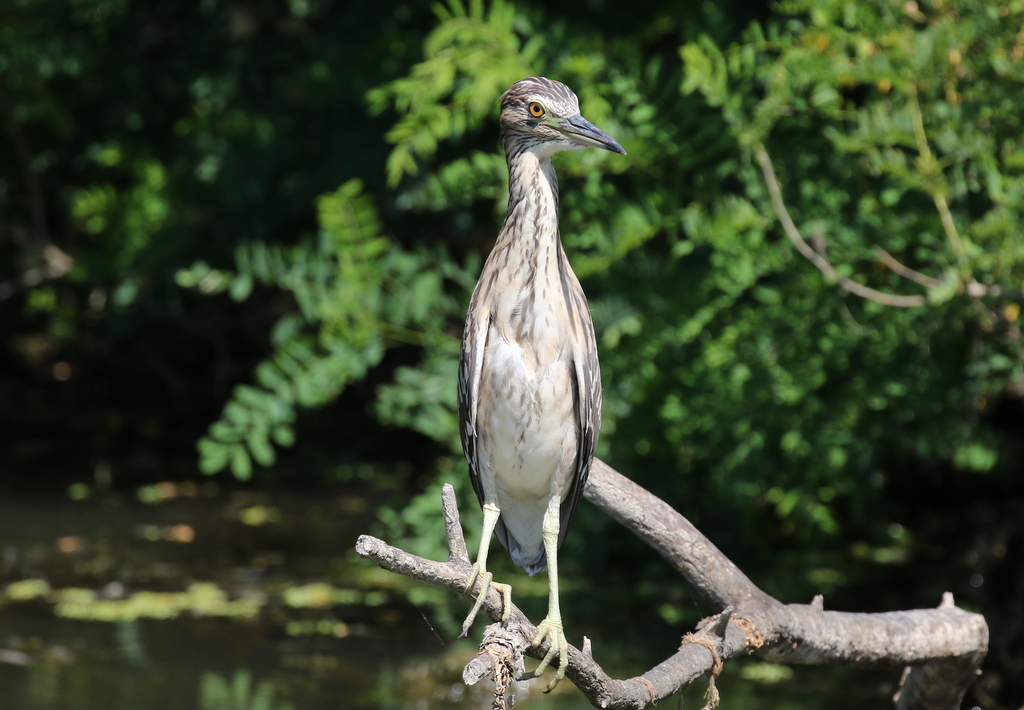
Egrets are abundant as well, with large numbers of both Great White Egret and Little Egret feeding along the channels. We saw lots of Glossy Ibis too, but only a couple of Spoonbills. White Storks were still fairly common, even though the breeding season was largely over, and we saw a couple of Black Storks flying overhead.
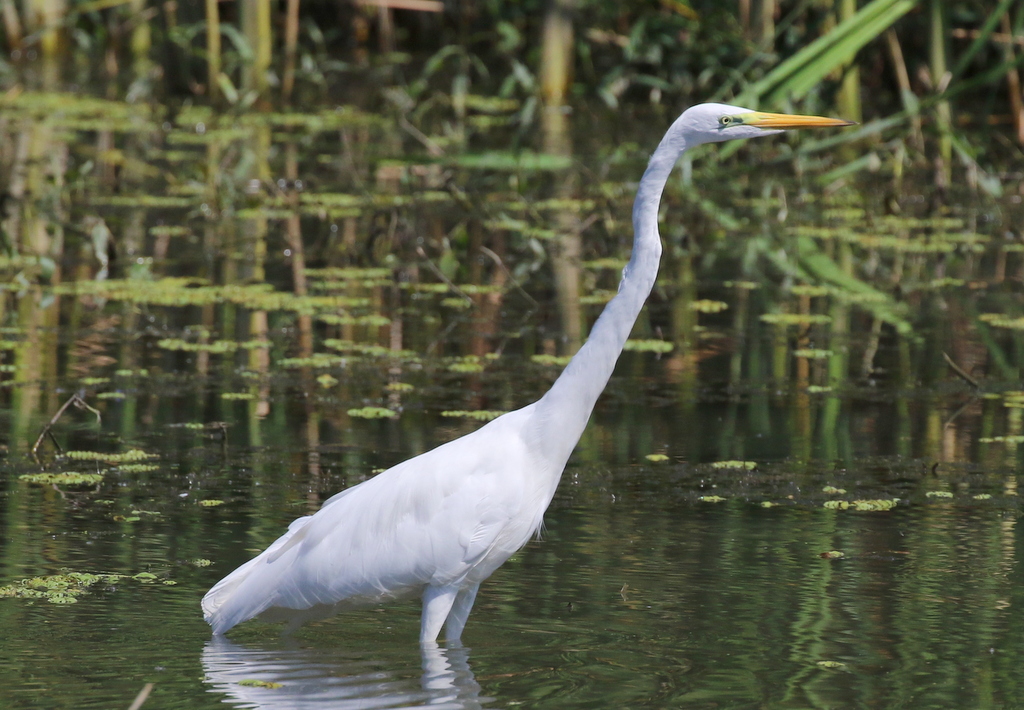
There are obviously lots of Little Bitterns, but they were typically elusive, hiding in the reeds. We heard many more than we saw and the latter were mostly birds seen flying across the channels, although we did see a few each day. (Great) Bitterns are present too, but in much smaller numbers and they are even harder to see, so it was a great spot to see one standing on the edge of the reeds as we were motoring past on our way back one afternoon.

Pelicans are one of the birds you want to see when you come to the Danube Delta. The area hosts significant breeding populations of both Great White Pelicans and Dalmatian Pelicans. The number of Great White Pelicans was historically estimated at around 4,500 pairs, out of a European population of 5,600, but more recent counts suggest there may now be over 17,000 pairs in the Delta alone! Dalmatian Pelicans are rarer, with only about 3,500 pairs in Europe, of which around 450 pairs nest in the Delta.
With the breeding season already over, and high levels of disturbance from boats on many of the channels during the holidays in Romania, we didn’t see as many pelicans as perhaps we might have done otherwise. Water levels were also apparently high, after unseasonally heavy rains in July. We had already seen lots of White Pelicans around the lagoons on the Black Sea Coast.
Despite this, we still saw White Pelicans daily in the Delta, generally in small groups loafing along the channels, or as single birds looking for an easy meal around fishing nets! On our last day, when we motored back through the quieter northern part of the Delta, we saw more White Pelicans, including some more sizeable flocks circling up to head off to feed and a feeding party out on one of the lakes.
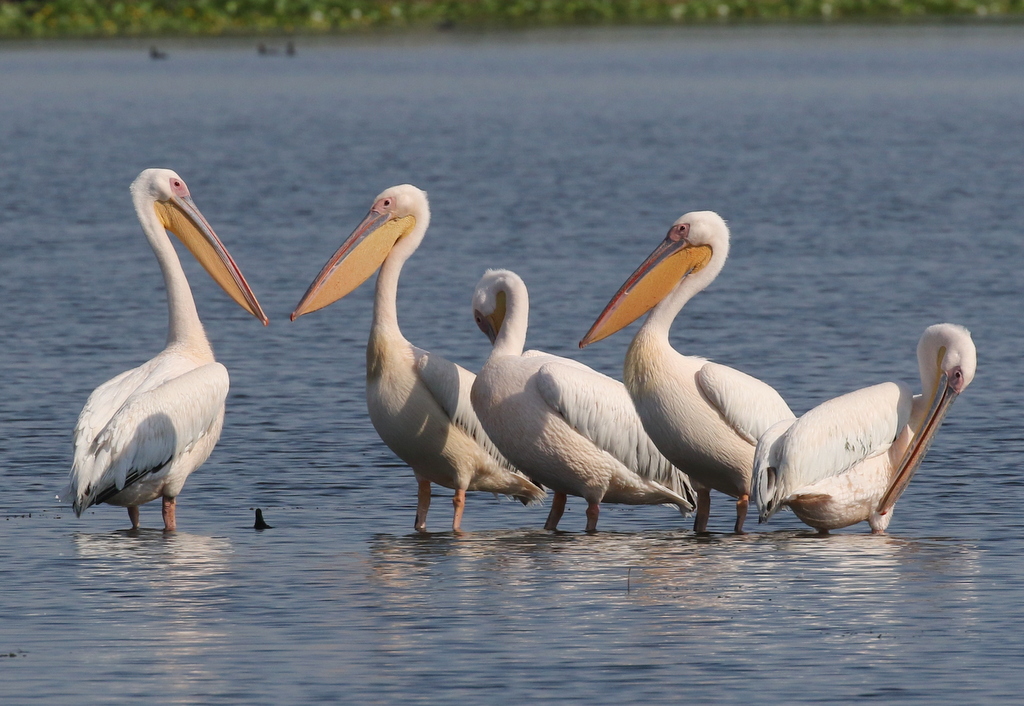
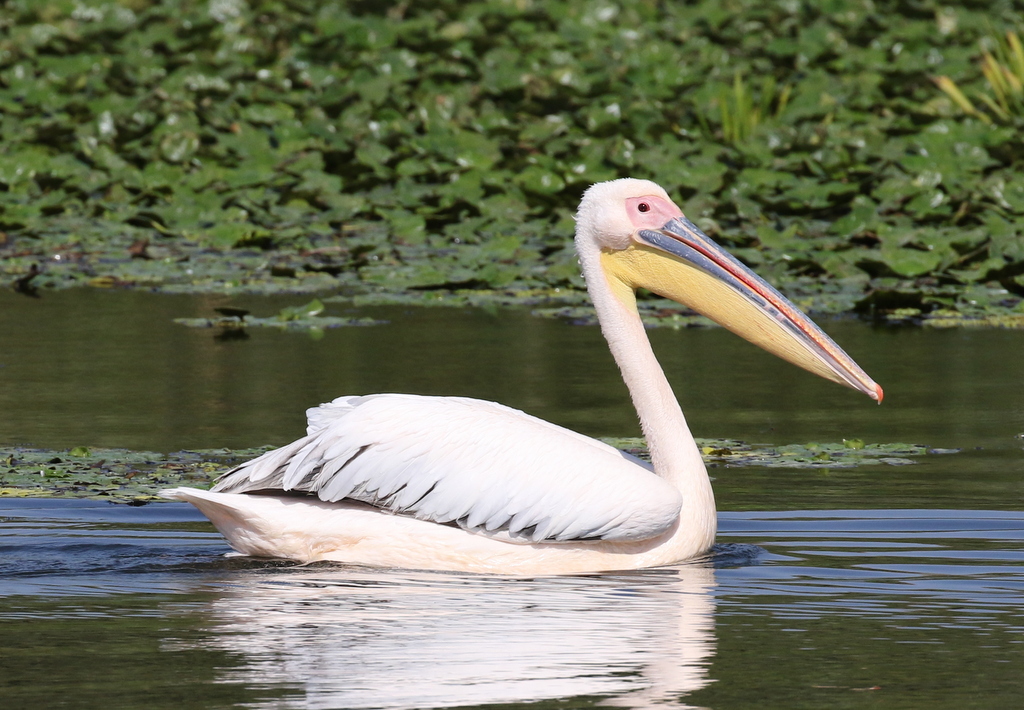
Probably for the same reasons, we only saw a small number of Dalmatian Pelicans on this trip, but still we got some nice close views of one or two birds.
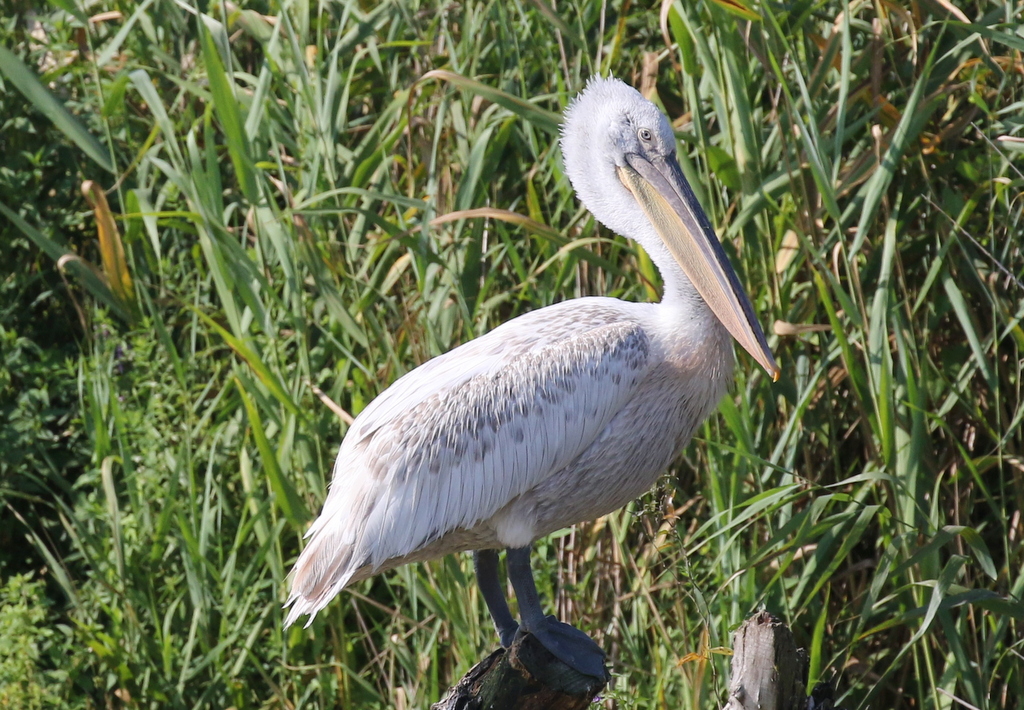
Pygmy Cormorant is another species localised to SE Europe for which the Delta is an important area. About 10,000 pairs are estimated to breed here, around 25% of the total European population. We saw a small number each day, mostly loafing on trees of posts along the channels, but we found more on the quieter channels to the north on our way back on the last day. It seems likely that when feeding they are particularly prone to disturbance by large numbers of boats.
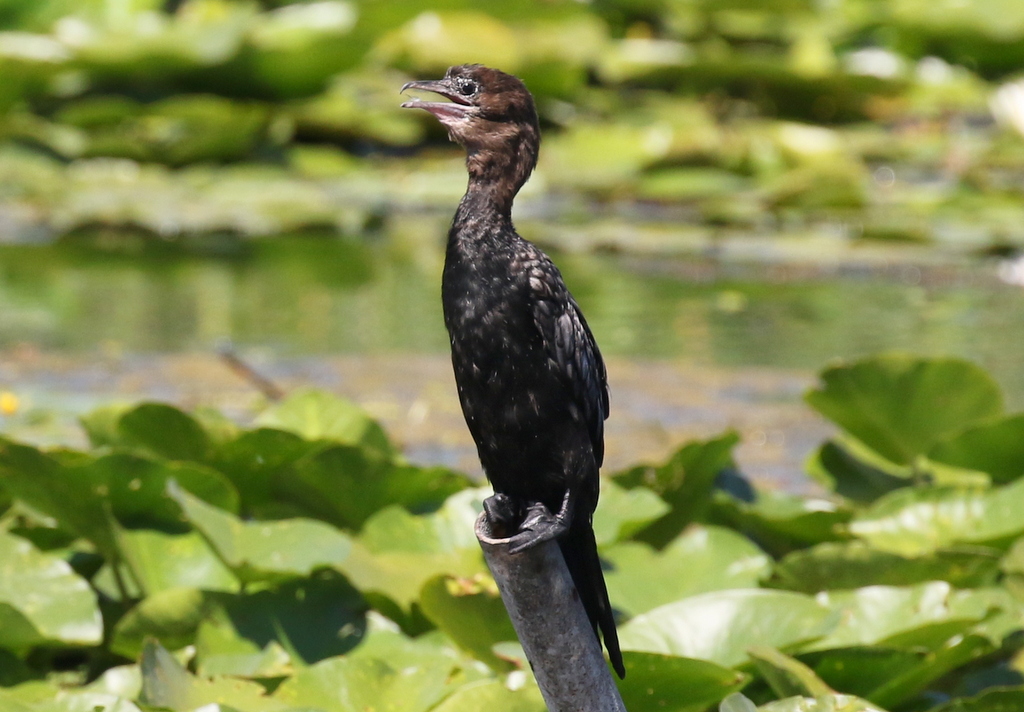
About two-thirds of the European population of Ferruginous Duck breeds in the Delta too. We saw a quite a few in the small lagoons along the edges of some of the quieter channels, including a good proportion of juveniles. However, the highlight was seeing over a thousand individuals on a single lake in a huge raft mixed with Coot and a smaller number of Common Pochard. Quite a sight!
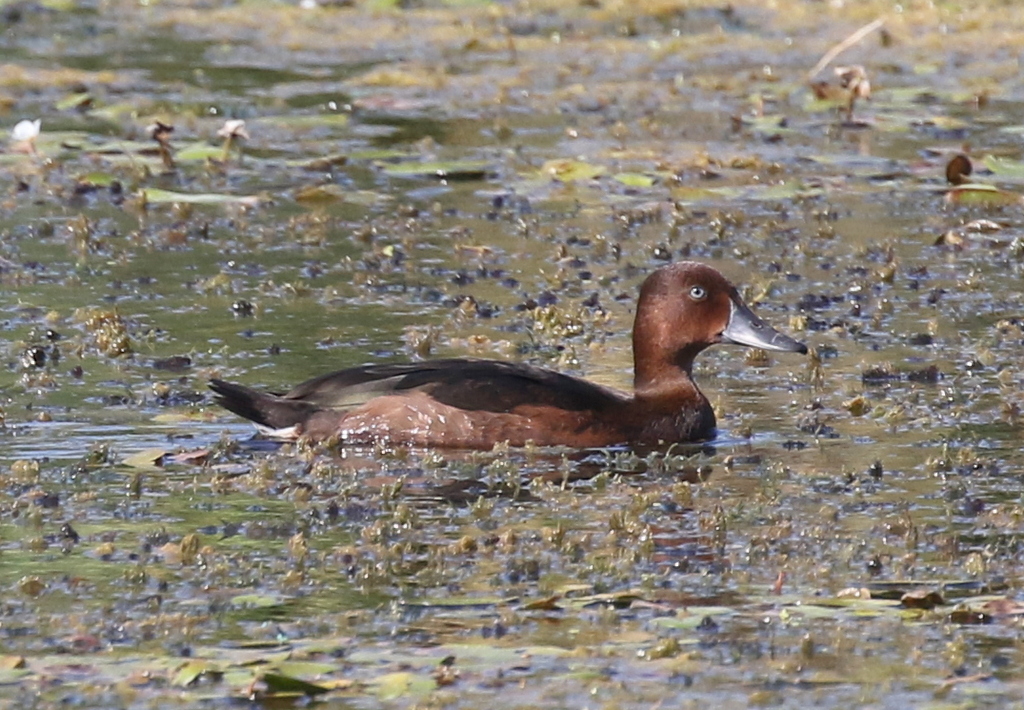
Garganey is probably the commonest duck here, at least the species which we saw most often. The biggest surprise was disturbing a family of Goldeneye from one of the channels – the Delta appears to be south of the usual range for this species, but apparently it has recently been proven to breed here, probably in very small numbers.
Grebes are well represented, with both Great Crested Grebe and Little Grebe being fairly common. We also saw smaller numbers of both Black-necked Grebe and Red-necked Grebe, both of which breed in the Delta.

Little Crakes breed here too, but are not easy to see. We were fortunate to spot single juveniles on two different occasions, creeping over the vegetation along the edge of the channels as we were passing, before they scurried quickly into cover.
Whiskered Terns are common, particularly around areas of floating vegetation, lilypads or water chestnut. We saw lots of fledged juveniles, many still being fed by adults, and even a pair still nest building! Large numbers also gathered to feed along the major waterways later in the day, dipping down to pick insects from the surface of the water.
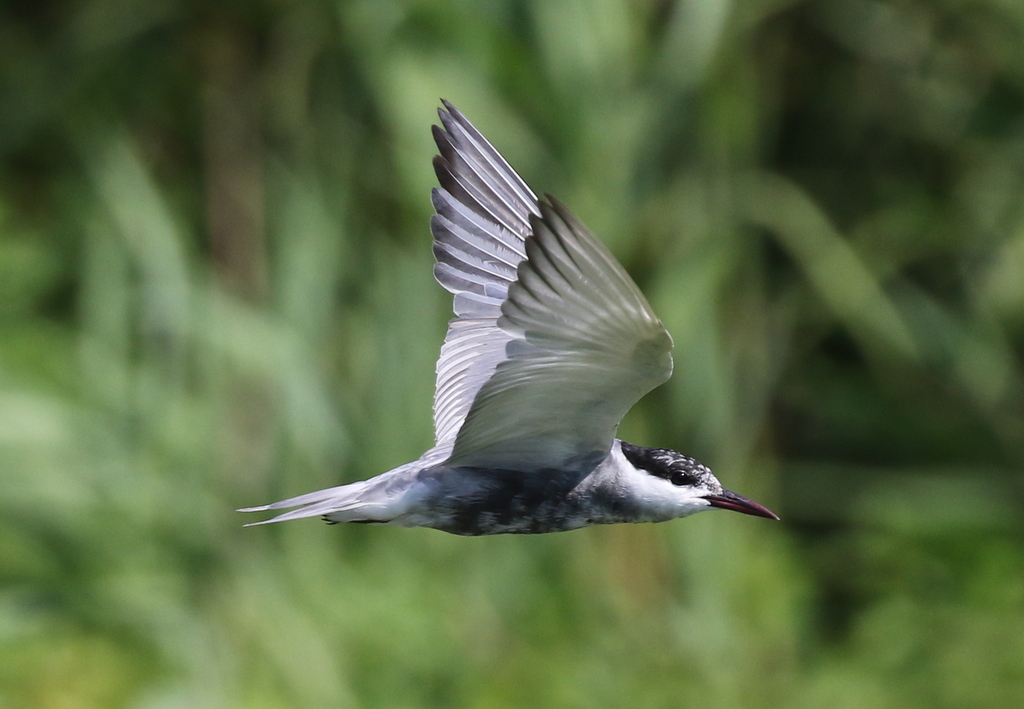
We also saw a single White-winged Black Tern, which flew over the boat on our way back one day, and Common Terns were (appropriately enough) common. We visited the village of Caraorman on one day and walked out to explore some small pools nearby. There were lots of gulls loafing here and with them a whopping total of at least 53 Caspian Terns!
White-tailed Eagles seem to be doing well in the Delta and we saw birds most days. An adult perched in the trees just above the channel was a particular treat. We cut the engine and drifted right underneath it – quite a sight to see it staring back down at us!
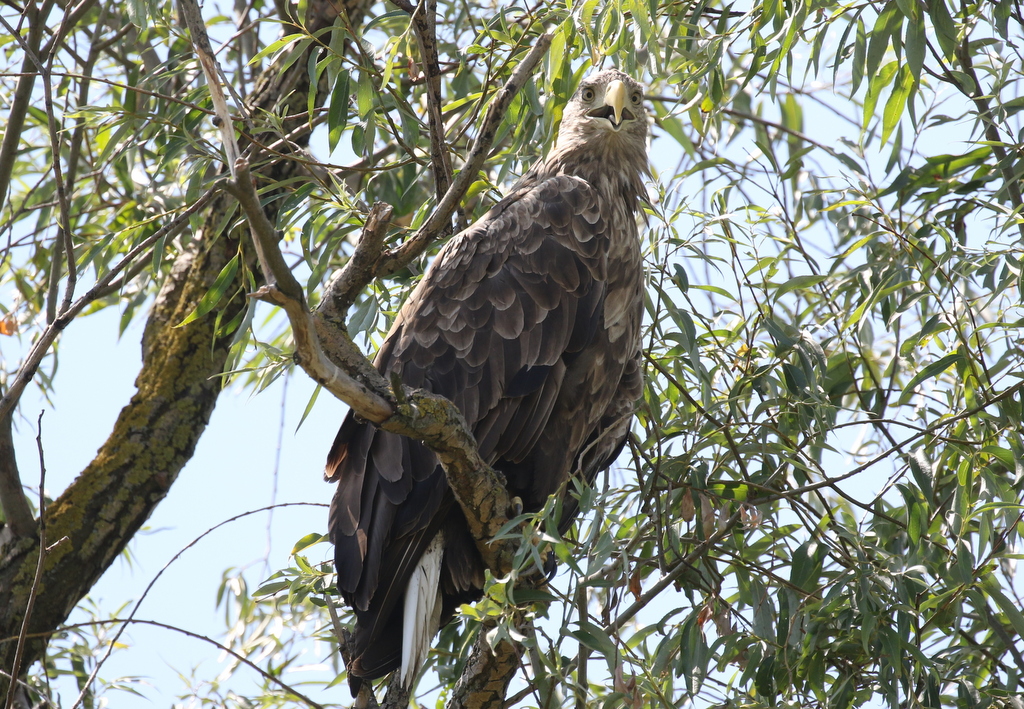
Marsh Harriers are fairly common here and we saw one juvenile Montagu’s Harrier hunting along the drier bank of one of the main channels, presumably just a bird passing through. A Black Kite drifting high overhead on our last day was a welcome bonus.
Hobby was probably the raptor we saw most often, with singles or pairs often seen circling over the trees beside the channels. We also saw a small number of Red-footed Falcons in the Delta, particularly around the village of Letea when we went to explore the forest which grows in the sand dunes here. Two Honey Buzzards circled up out of the trees that day too.

Out in the more open parts of the Delta, we saw relatively few passerines. In the reedbeds, we saw Great Reed, Reed and Sedge Warblers. Bearded Tits could be heard pinging and we heard several Penduline Tits and had good views of a juvenile.
The more wooded parts of the Delta are surprisingly good places for woodpeckers. We saw three different Black Woodpeckers – two from the boat in poplars along the channels and a third when we walked into the Letea Forest. We also had our best views of several Grey-headed Woodpeckers here, plus numerous Syrian and Lesser Spotted Woodpeckers.
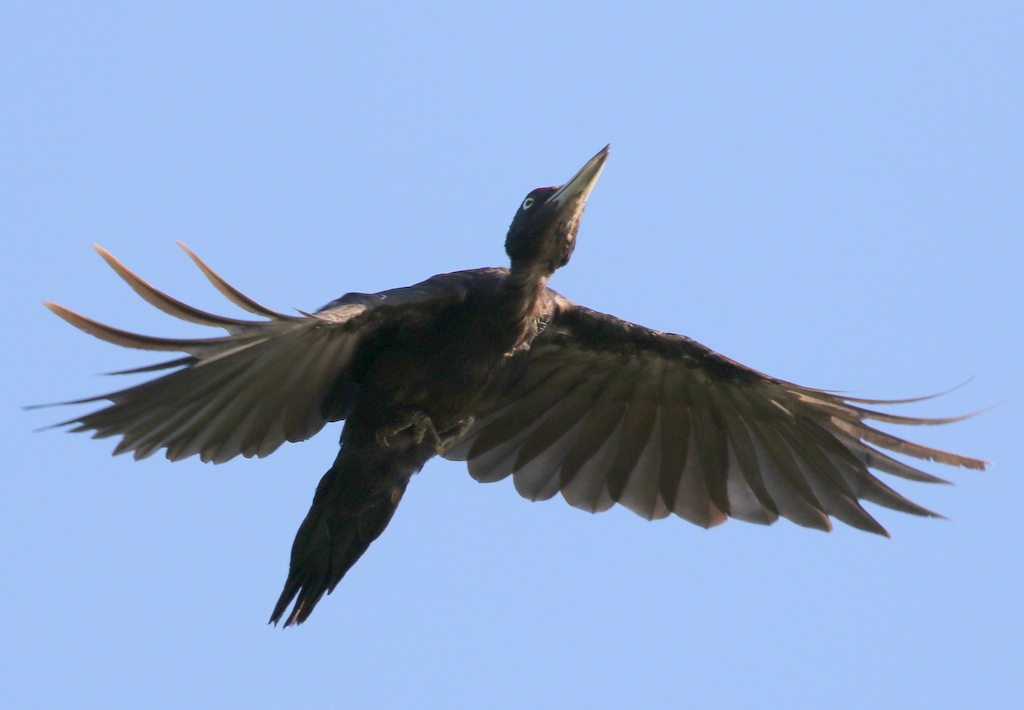
Also in the trees and bushes along the channels, we saw Golden Orioles, Redstarts and some of the commoner warblers. Our only Icterine Warbler of the trip appeared in the willows above the boat when we had stopped to listen to a couple of calling Thrush Nightingales. On our walk in Letea Forest, as well as the Black Woodpecker, the highlight was finding several juvenile Collared Flycatchers (it appears they may breed here), alongside the much more numerous Spotted Flycatchers.
It appeared that passerines were already moving through the Delta, and walking along the river bank in the early morning at Crisan we came across good numbers of Willow Warblers and Lesser Whitethroats, plus a juvenile Red-breasted Flycatcher. We had our best views of Thrush Nightingale here too, in the bushes along the river.
Crisan also provided us with a couple of nice surprises. An isolated population of Bluethroats breeds in the Delta and it is not an easy bird to see here. We were therefore very pleased to find one feeding under the tamarisks on the edge of the village, and we subsequently saw it on the following two days too.

Wagtails were some of the commonest passerines around the Delta. We saw large numbers of ‘yellow’ wagtails – both Blue-headed and Black-headed Wagtails – as well as White Wagtails. We had been told that Citrine Wagtail is just a very rare visitor here even though, based on its breeding and wintering ranges, it might be expected to pass through here more regularly. It was therefore nice to find a first winter Citrine Wagtail feeding with White Wagtails around a small marshy pool by the tamarisks on the edge of Crisan village.

It was even more of a surprise to find two more first winter Citrine Wagtails together in the same place a couple of days later. Photos confirmed that they were two different individuals. It appears therefore that they are most likely under-recorded here and are probably regular migrants through the Delta.
We had a really enjoyable 4 days in the Danube Delta – seeing a total of 120 bird species here alone. It really is somewhere everyone should visit. From there, we made our way up to Transylvania and the southern Carpathian mountains for the third part of our trip, which we will cover in the final blog post to follow…
















